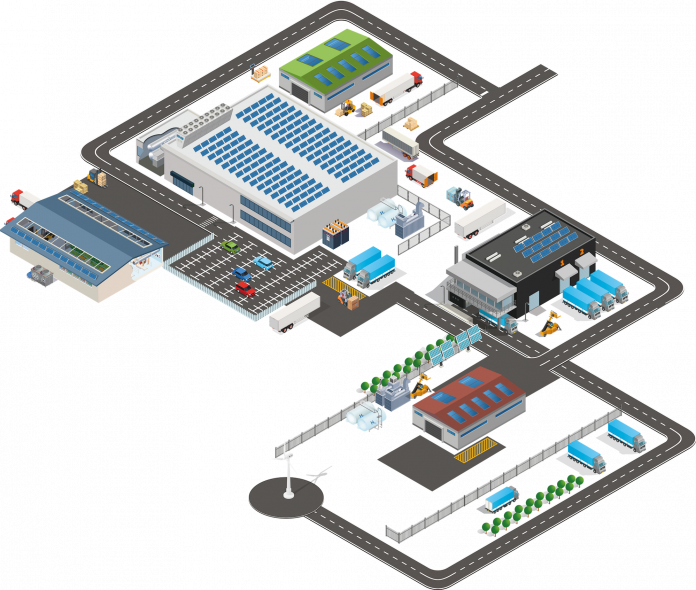Electrification is at the heart of net zero planning for many energy intensive businesses across the UK. Switching power generation from fossil fuels to renewable sources allows businesses to unlock lower energy costs and reduced carbon emissions, in line with their corporate commitments. Yet, according to On-Site Energy, companies would be best served by considering the multiple renewable routes to net zero and not rush into significant investment decisions before considering all the impacts and alternative strategies.
Businesses should be proactive and flexible and look at alternative green solutions with the ethos of maximising their carbon reductions whilst also remaining competitive within their respective industries. Such solutions could include making infrastructure upgrades, heat upgrading through heat pump technology or other mechanical techniques and accessing piped hydrogen or generating hydrogen onsite.
Working with a third-party technology solutions provider can provide your business with the insight and expertise it needs to reach its net zero goals. Their knowledge of innovative, new technology and financial funding arrangements can provide you with new ways of thinking that will help your business to maximise its energy and financial efficiency as it strives towards net zero.
Why Electrify?
Currently, nearly 60% of the UK’s energy consumption is from fossil fuels with the majority of this energy being generated from natural gas. In 2020, gas emitted 49 fewer grams of CO2 per kWh than electricity and cost 450% less per kWh than electricity in the UK. So, why electrify?
Put simply, it’s all about the long-term approach. By 2030, electricity is expected to produce 44 fewer grams of CO2 per kWh than gas.[1] This is due to the predicted increase in renewables to power the national grid lowering the overall emissions produced from generating electricity.
David Kipling, CEO of On-Site Energy, comments, “From a long-term perspective, electrification can help build resilience against volatile gas prices, while bringing the company closer to its decarbonisation targets. However, it should be noted carefully that the current spark spread means a straight change from gas to electricity would increase your energy costs by at least 450%, unless the technology being installed is at least 450% more efficient than the equipment it is replacing. Therefore, consulting a solutions provider such as On-Site Energy can help you to decipher which technologies are suitable for replacing gas directly without raising your costs.”
Barriers to electrification
Yet the road to electrification is not a simple process for many businesses. The application process for companies looking to connect over 1MW to the grid currently takes at least 12 months and even then, there is no guarantee that businesses will be able to connect any time before 2037. With this in mind, businesses should look at how they can improve their energy efficiency using an alternative approach.
Taking an approach that prioritises the emissions reductions that can actually be achieved over the next 10-15 years will help businesses to reach their 2030 and 2050 decarbonisation targets without the need to connect to the grid.
For example, new, innovative heat pumps can now reach temperatures in excess of 200oC and as far down as -40oC, pushing the boundaries of achievable temperature range. This is promising for the chemicals industry as many of its process temperatures are in excess of 170oC so older heat pump technology is not suitable for these processes as they can typically only reach up to 80oC.
Replacing less efficient technology also enables companies to make some quick wins on their journey to net zero. For instance, replacing a 75% efficient gas steam boiler consuming 5,000,000kWh with an 86% efficient one, would save 640,000kWh of gas a year. Using current gas prices, that’s a saving of at least £53,760 a year and a reduction in 117,760kg of CO2 emissions.
Access to piped hydrogen should also be taken into consideration. Companies situated in the areas outlined in Phase-2 of the cluster sequencing process could have access to some of the 1GW of electricity produced from hydrogen fuel as early as 2025.
Getting projects off the ground
A final barrier to consider is the financing of net zero strategies. While many companies have the impetus and a pathway outlined to reach net zero emissions, the capital investment needed to launch these projects can be a major stumbling block. Balance sheet management is also often a significant factor in these types of projects being given the go-ahead.
This is particularly true for energy intensive industries that must remain globally competitive whilst aiming to reach UK Government deadlines. For these companies, the financial efficiency as well as the energy efficiency of a project is paramount. Hence, long payback periods and slow ROIs will make investment in reducing carbon emissions unviable for businesses in industries such as chemicals, steel or glass.
Working with a third party in this scenario could be beneficial as companies are able to access external funding to make their projects live. On-Site Energy’s off-balance sheet, zero capex model, for example, enables your business to adopt changes without risking your own capital. Kipling added: “On-Site Energy can also project manage and install equipment on site to ensure that you receive expert guidance and assistance along every step of your decarbonisation journey. With our expertise we can help you to get your projects off the ground and into action.”
It’s all about efficiency
Looking ahead your business needs to prepare itself for the challenges of electrifying. Whether that be limited access to the national grid or a lack of capital to invest in large sustainability projects, your business should be prepared to adapt if it wants to reach net zero emissions by 2050.
Focusing on maximising the efficiency of every aspect of your business will allow you to take the appropriate steps needed to decarbonise your operations whilst also remaining globally competitive. This includes analysing how you can optimise the energy efficiency of your site, considering all types of available technology. It also includes assessing which steps to implement first on your path to decarbonisation and under what kinds of financial funding to maximise the financial efficiency of your investment.
To find out more about On-Site Energy, please visit https://on-site.energy/
[1] https://on-site.energy/wp-content/uploads/2023/09/OSE-Ind-elec-Paper-Final-2-1.pdf




